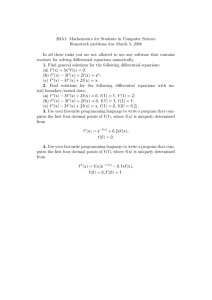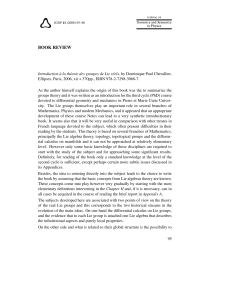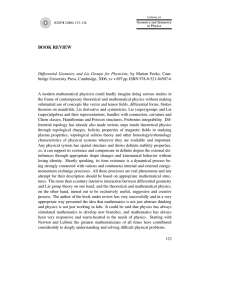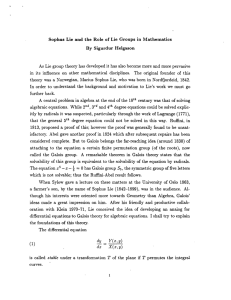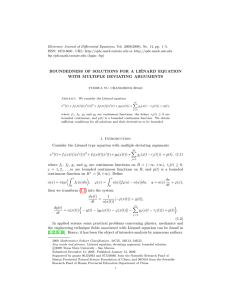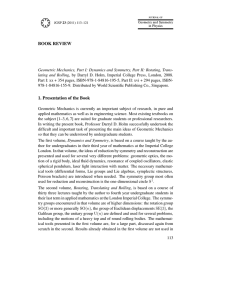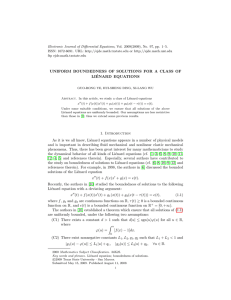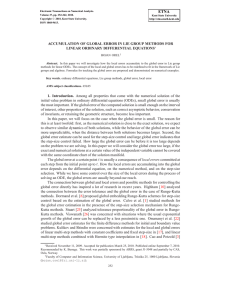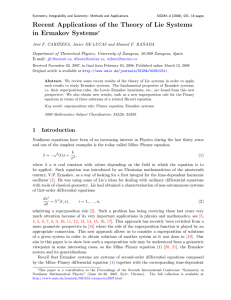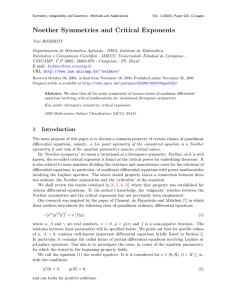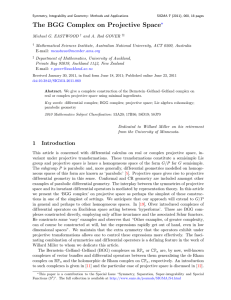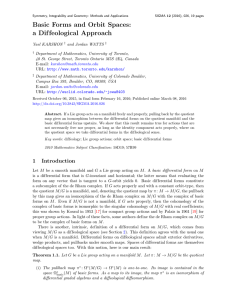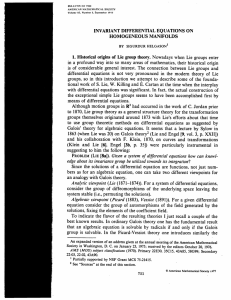Document 10584092
advertisement
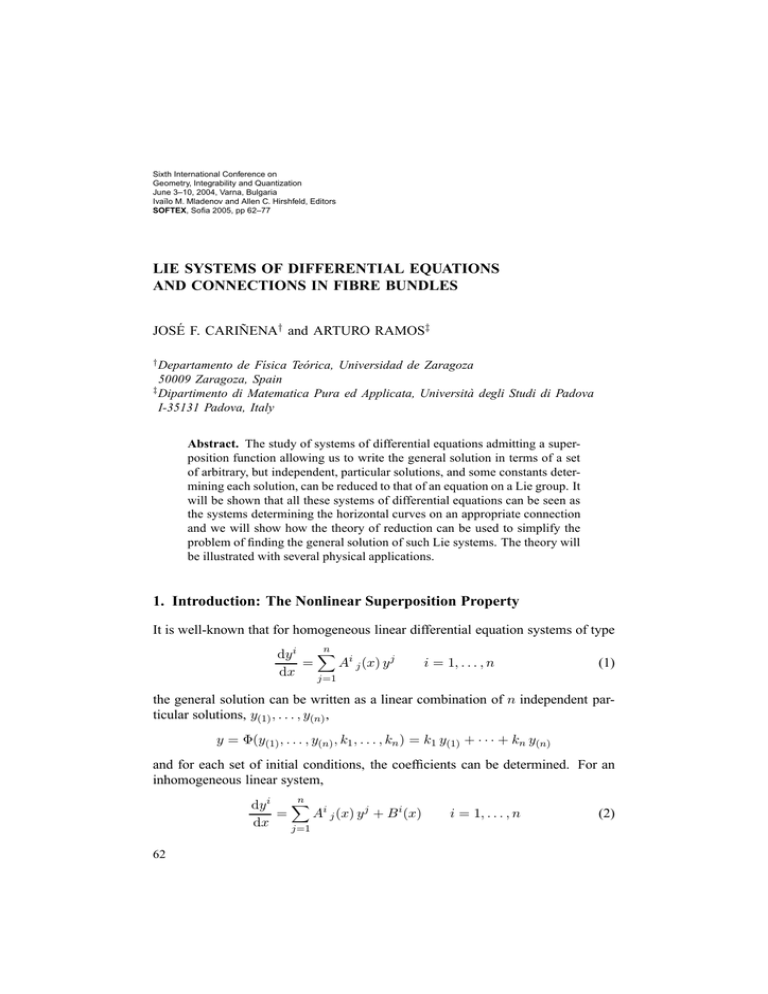
Sixth International Conference on Geometry, Integrability and Quantization June 3–10, 2004, Varna, Bulgaria Ivaïlo M. Mladenov and Allen C. Hirshfeld, Editors SOFTEX, Sofia 2005, pp 62–77 LIE SYSTEMS OF DIFFERENTIAL EQUATIONS AND CONNECTIONS IN FIBRE BUNDLES JOSÉ F. CARIÑENA† and ARTURO RAMOS‡ † Departamento de Física Teórica, Universidad de Zaragoza 50009 Zaragoza, Spain ‡ Dipartimento di Matematica Pura ed Applicata, Università degli Studi di Padova I-35131 Padova, Italy Abstract. The study of systems of differential equations admitting a superposition function allowing us to write the general solution in terms of a set of arbitrary, but independent, particular solutions, and some constants determining each solution, can be reduced to that of an equation on a Lie group. It will be shown that all these systems of differential equations can be seen as the systems determining the horizontal curves on an appropriate connection and we will show how the theory of reduction can be used to simplify the problem of finding the general solution of such Lie systems. The theory will be illustrated with several physical applications. 1. Introduction: The Nonlinear Superposition Property It is well-known that for homogeneous linear differential equation systems of type n dy i X = Ai j (x) y j dx j=1 i = 1, . . . , n (1) the general solution can be written as a linear combination of n independent particular solutions, y(1) , . . . , y(n) , y = Φ(y(1) , . . . , y(n) , k1 , . . . , kn ) = k1 y(1) + · · · + kn y(n) and for each set of initial conditions, the coefficients can be determined. For an inhomogeneous linear system, n dy i X = Ai j (x) y j + B i (x) dx j=1 62 i = 1, . . . , n (2)





